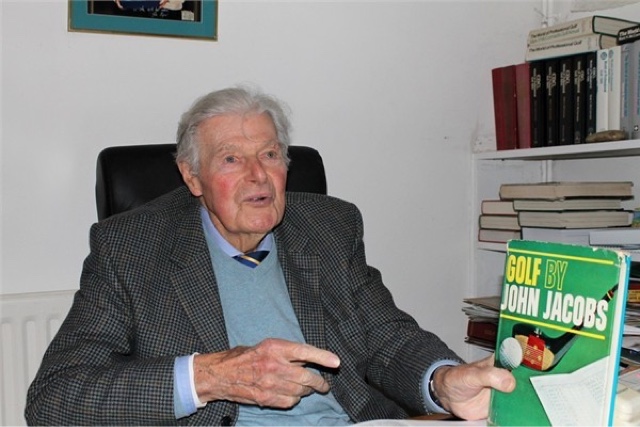Everyone misses short putts, though it seemed for about ten years that Tiger Woods never did. In fact, Matsuyama three-putted the first hole of the final round, then three-putted again on seventeen to end up losing to Justin Thomas at the SBS Tournament of Champions. No doubt he looked back with chagrin on those two relatively short putts he missed. But for those two putts, he might have won for the fifth time in his last six outings.
Bobby Jones, in his book Bobby Jones on Golf, had this to say about short putts:
"To miss a putt of a yard length seems the most useless thing in the world. The texture of most of our greens upon which competitions are played is such that no valid excuse is offered the player. In almost every case, one may have assurance that, if struck properly, the ball will find the bottom of the cup.
The short putt presents a problem, because if we allow for the roll of the green, the stroke must be so delicate and the blow so gentle. To strike a crisp, firm, and at the same time gentle blow requires the very ultimate degree of what we call touch, and firm hitting is the essence of good putting.
On a keen green, putts of a yard can be terrifying, especially in medal or stroke competition. The player always has the choice of striking firmly for the back of the cup if he does not like the delicate curling attempt--but then he must think of the putt he might have coming back if he should miss the first.
The mental attitude in which we approach a short putt has a lot to do with our success. When we walk up to a putt of ten or fifteen feet, we are usually intent upon holing it; we know we shan't feel badly if we miss, so our entire attention is devoted to the problem of getting the ball into the hole. But it is quite different when the putt is only a yard long. Then we know that we ought to hole it easily, and yet we cannot fail to recognize the possibility of a miss. Instead of being determined to put the ball into the hole, we become consumed with the fear of failing to do so. Our determination, if we may call it such, is negative. We are trying not to miss the putt rather than to hole it.
A good many short putts are missed because of rank carelessness; the thing looks so simple that it is hard to view it seriously. Yet it will be observed that comparatively few very short putts are missed in the course of a friendly informal round. This would argue that tension and anxiety cause more misses than lack of care, and we might be convinced of this were it not for the diabolical perversity every golfer knows to be inherent in a golf ball. A casual tap with the back of the putter is enough to hole any short putt when no one cares whether it goes in or not, but once large issues are placed upon the result, two hands and a world of pains are required to steer the ball into the hole.
There is nothing so demoralizing as missing a short putt. Many times I have seen a man's entire game, from tee to green, destroyed in the course of a few holes as a result of one little putt. One missed, the next one looks doubly hard; that cast away, too, then the approach putts begin to stop all distances from the cup, applying pressure with ever greater force; soon putting becomes impossible, and the player begins to force his long game, trying to place his second shots so close to the hole that he will have to do little putting. A rapid progression through these stages before long can result in utter rout.
I do not need to recount the matches in important championships that have been turned by the missing of a tiny putt. Every man who has played golf knows how quickly the tide may turn on such a thing; for the miss not only destroys the player's confidence, it also inspires his opponent.
Long ago I learned that no putt is short enough to take for granted. I have long since recognized the folly of one-handed, backhanded, and all other kinds of disgusted efforts. When it mattered at all whether or not the next stroke went in, no matter how short the putt might have been, it received from me as close attention as I was able to give...
I shall never forget my feeling as I prepared to hole my last putt at Scioto, in Columbus, Ohio, to win the United States Open in 1926. The thing could not have been over three inches in length. Yet, as I stepped up to tap it in, the wildest thought struck me. 'What if I should stub my putter into the turf and fail to move the ball?' I very carefully addressed the putt with my putter blade off the turf and half-topped it into the hole. Sounds a bit psycho, doesn't it? But golfers can get that way."
Everyone hates missing short putts. But we miss them all the same.
































